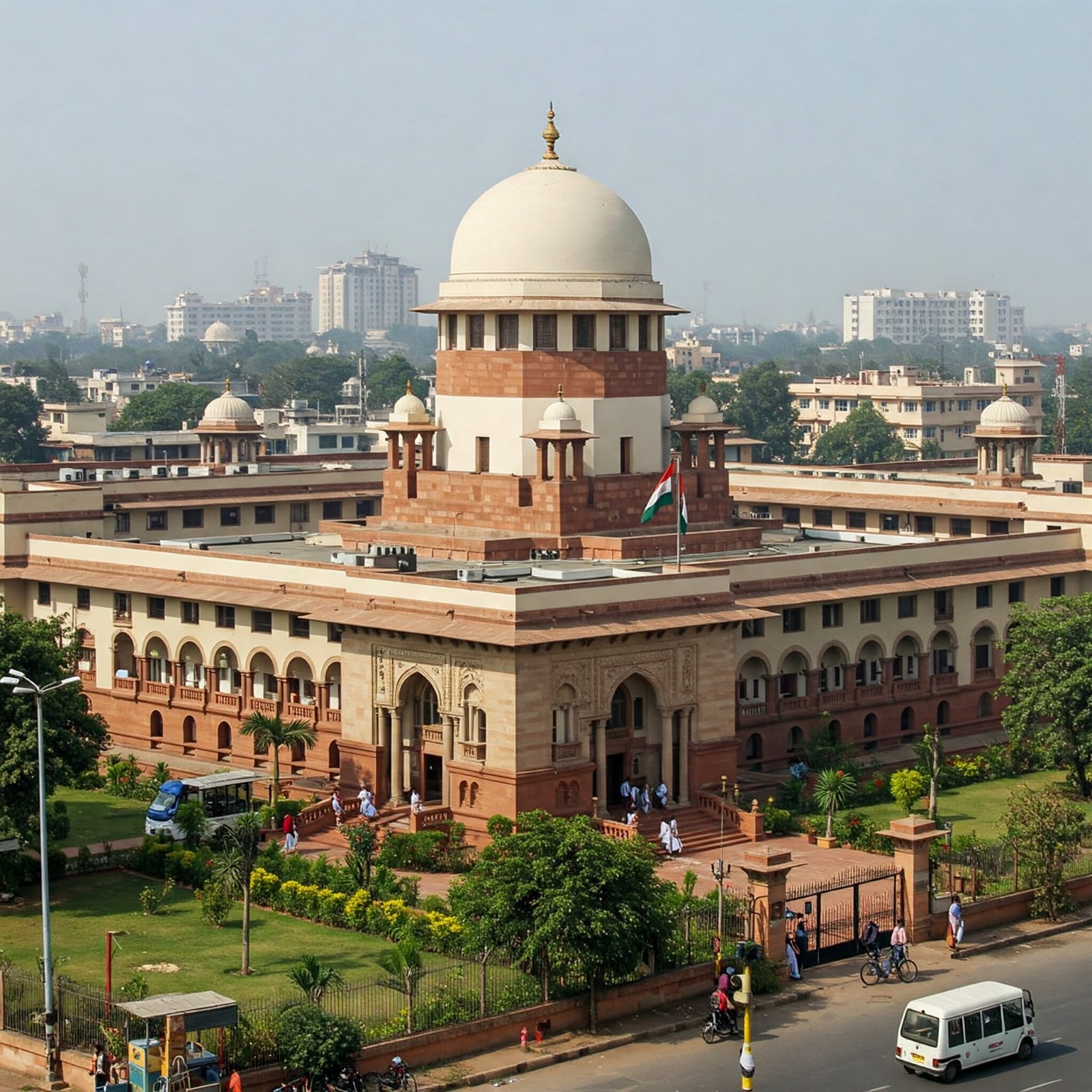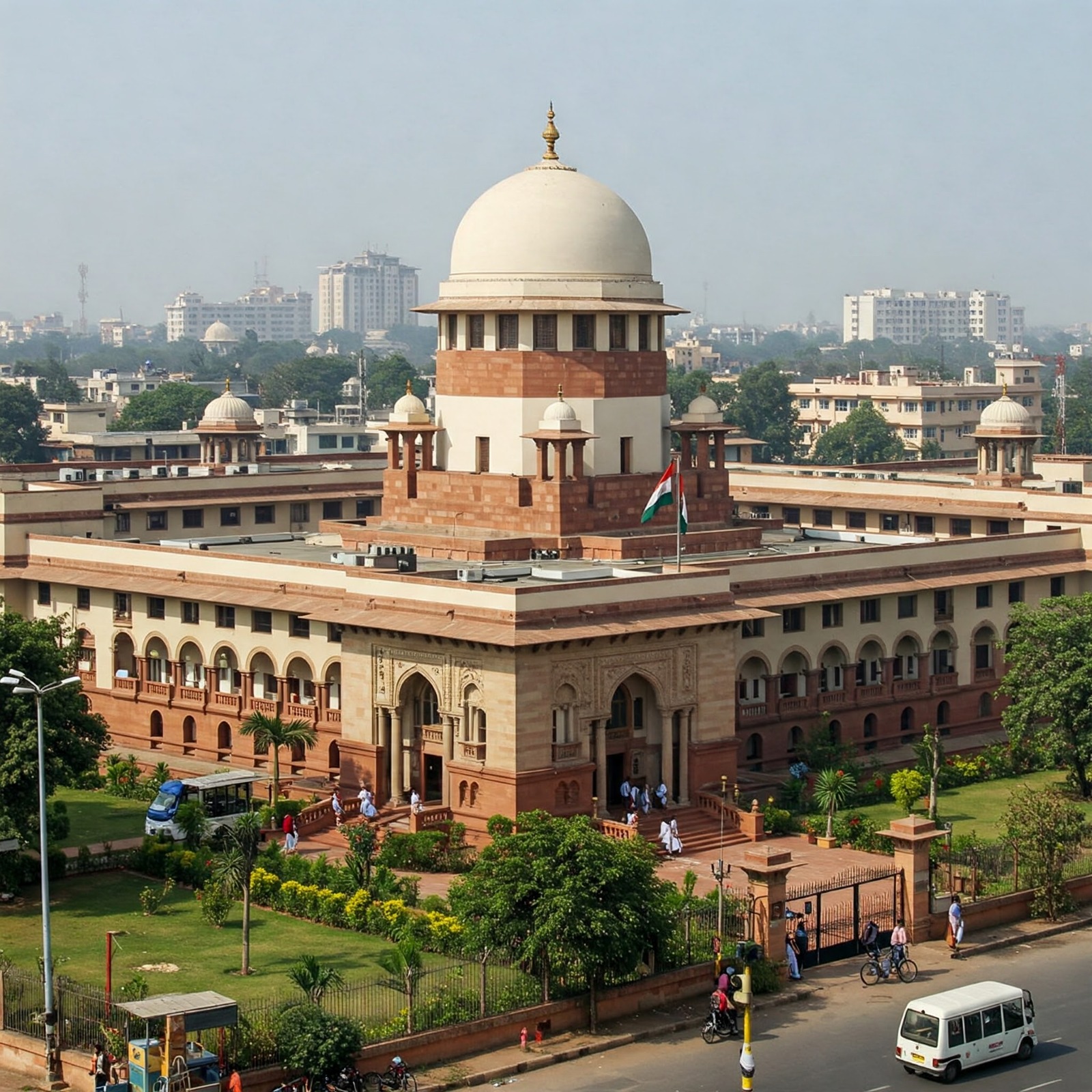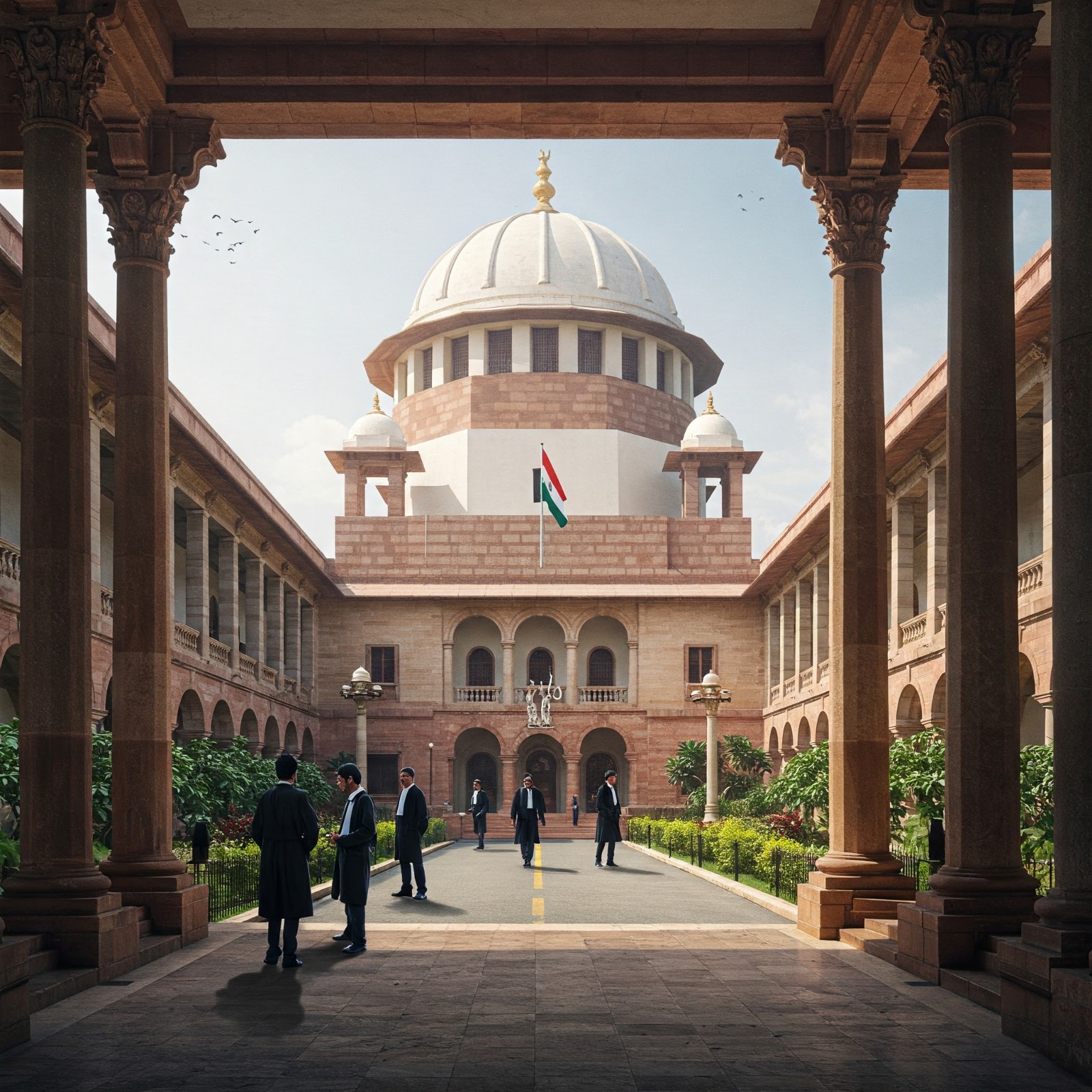JUSTICE K.S.PUTTASWAMY(RETD) AND ANR. VS UNION OF INDIA AND ORS (2017) 10 SCC 1



BENCH: Chief Justice J.S. Khehar and Justices D.Y. Chandrachud, R.K. Agrawal, S.A. Bobde, R.F. Nariman, A.M. Sapre, Dr. D.Y. Chandrachud, Sanjay Kishan Kaul, and S. Abdul Nazeer.
BACKGROUND:
The Justice K.S. Puttaswamy (Retd.) v. Union of India case emerged from a larger debate on the right to privacy in India, triggered primarily by the government’s push for Aadhaar, a biometric-based identification system. Introduced in 2009 by the Unique Identification Authority of India (UIDAI) under the UPA government, Aadhaar was initially designed to streamline welfare distribution and prevent leakages in government subsidies. However, over time, its scope expanded significantly under the NDA government, making it mandatory for various services, including bank accounts, mobile connections, and income tax filings. Concerns grew that Aadhaar was being used as a tool for mass surveillance, with potential misuse of biometric and personal data by both the state and private entities. Critics feared that the government’s insistence on Aadhaar-based authentication, despite documented cases of exclusions and data breaches, could violate fundamental rights, particularly the right to privacy. The opposition, civil society groups, and digital rights activists raised alarms over the lack of a robust data protection framework, arguing that citizens were being compelled to part with sensitive information without adequate safeguards. This led to widespread public debates, protests, and legal challenges, culminating in a larger constitutional question: whether the right to privacy was a fundamental right under the Indian Constitution.
The case was filed as a Public Interest Litigation (PIL) in 2012 by Justice K.S. Puttaswamy, a retired Karnataka High Court judge, who challenged the constitutional validity of Aadhaar on the grounds that it violated individual privacy and personal autonomy. The petition contended that Aadhaar’s mandatory linking to essential services effectively created a surveillance state, where the government could track citizens’ movements, transactions, and private activities without sufficient checks and balances. The legal battle was not just about Aadhaar but about the broader principle of whether the Indian Constitution recognized the right to privacy as an intrinsic and enforceable fundamental right. The case became highly political, with the government defending Aadhaar as a critical tool for national security, financial inclusion, and welfare efficiency, while opposition parties and activists saw it as an unconstitutional encroachment on civil liberties. The Supreme Court was thus faced with the task of deciding whether privacy was a fundamental right under the Constitution and whether the state could impose Aadhaar without violating personal freedoms. The case gained immense national and international significance, setting the stage for a historic ruling on digital rights, personal freedom, and state power in India.
FACTS:
The case arose from concerns over the Aadhaar scheme’s potential infringement on fundamental rights, particularly the right to privacy. Justice K.S. Puttaswamy, a retired judge of the Karnataka High Court, filed a Public Interest Litigation (PIL) in 2012, challenging the constitutional validity of the Aadhaar project on the grounds that it violated personal autonomy, dignity, and informational self-determination. The petition contended that the government’s push for Aadhaar-based authentication as a prerequisite for accessing essential services—including bank accounts, mobile SIM cards, pensions, welfare subsidies, and even the filing of income tax returns—amounted to coercion and an unconstitutional invasion of privacy. The petitioner argued that making Aadhaar mandatory for availing government benefits effectively denied individuals their entitlements if they refused to enroll, thus violating Article 21 of the Constitution, which guarantees the right to life and personal liberty. Additionally, the Aadhaar database’s collection of biometric and demographic data without explicit safeguards and robust data protection laws posed a significant threat to informational privacy, as it allowed the state to create an intrusive surveillance mechanism. The petitioner further highlighted numerous instances of data breaches, identity fraud, and denial of benefits due to Aadhaar authentication failures, reinforcing the claim that the scheme was fundamentally flawed and unconstitutional.
The legal challenge also extended to specific constitutional provisions, particularly Articles 14, 19, and 21. Under Article 14 (Right to Equality), the petitioner argued that Aadhaar created an arbitrary classification by making the possession of an Aadhaar number a prerequisite for accessing government services, thereby excluding those unwilling or unable to enroll. Under Article 19(1)(g) (Right to Practice Any Profession), it was contended that Aadhaar’s mandatory linkage to banking and mobile services hindered an individual’s ability to conduct financial transactions freely, impinging upon economic rights. The core issue, however, was whether the right to privacy was a fundamental right under the Indian Constitution, as the government initially contended that privacy was not a constitutionally guaranteed right. The case also raised concerns about the lack of legislative oversight, as Aadhaar was implemented through executive orders before being granted statutory backing in 2016. Additionally, the petitioners referenced international legal standards, including India’s obligations under the International Covenant on Civil and Political Rights (ICCPR), which recognized privacy as a fundamental human right. The case, therefore, was not just about Aadhaar but also about defining the scope and contours of privacy as a constitutional right in India. The Supreme Court was tasked with determining whether privacy was inherent in the fundamental rights framework and whether the Aadhaar scheme, in its existing form, violated this right.
ISSUES:
The key question was whether privacy is protected under the Indian Constitution, particularly under Articles 14 (Right to Equality), 19 (Right to Freedom), and 21 (Right to Life and Personal Liberty).
Whether the Aadhaar project, which mandated biometric data collection and authentication for access to government services, violated fundamental rights, including the right to privacy, dignity, and informational self-determination.
Whether the Aadhaar database created an intrusive surveillance mechanism, leading to excessive state control over personal information without adequate safeguards.
Whether making Aadhaar mandatory for welfare benefits, banking, mobile services, and tax filings (such as linking with PAN) violated constitutional rights by creating an arbitrary distinction between those with and without Aadhaar.
Whether Aadhaar was implemented legally, considering it was initially introduced through an executive order before receiving statutory backing via the Aadhaar Act, 2016, and whether the Act was constitutionally sound.
LEGAL PROVISIONS AND CASES:
Article 14 (Right to Equality)
Article 19 (Right to Freedom)
Article 21 (Right to Life and Personal Liberty)
Aadhaar (Targeted Delivery of Financial and Other Subsidies, Benefits and Services) Act, 2016
Information Technology Act, 2000
Telegraph Act, 1885
Prevention of Money Laundering Act, 2002
M.P. Sharma v. Satish Chandra (1954)
Kharak Singh v. State of Uttar Pradesh (1962)
Govind v. State of Madhya Pradesh (1975)
Maneka Gandhi v. Union of India (1978)
R. Rajagopal v. State of Tamil Nadu (1994)
People’s Union for Civil Liberties (PUCL) v. Union of India (1997)
Naz Foundation v. Government of NCT of Delhi (2009)
Selvi v. State of Karnataka (2010)
National Legal Services Authority (NALSA) v. Union of India (2014)
Shayara Bano v. Union of India (2017)
JUDGEMENT WITH REASONING:
The Supreme Court of India, in a unanimous 9-judge bench decision, ruled that the right to privacy is a fundamental right under the Indian Constitution, protected under Article 21 (Right to Life and Personal Liberty) and Part III (Fundamental Rights) of the Constitution. The Court overruled previous judgments in M.P. Sharma (1954) and Kharak Singh (1962), which had held that the Constitution did not guarantee a right to privacy. The judgment recognized privacy as an intrinsic part of dignity, autonomy, and liberty, making it an essential aspect of personal freedom.
The Court also emphasized that the right to privacy is not absolute and can be restricted by the state in certain circumstances, provided such restrictions are based on legitimate state interest, follow due process, and satisfy the three-pronged test:
Legality – The restriction must be backed by a valid law.
Necessity – The measure must be necessary to fulfill a legitimate aim.
Proportionality – The intrusion into privacy must be proportionate to the objective sought.
Reliefs and Directions Given by the Court:
Right to Privacy as a Fundamental Right – Declared privacy as a part of the right to life and personal liberty under Article 21 and an essential part of freedom and dignity under Part III of the Constitution.
Overruling Previous Judgments – The Court overruled M.P. Sharma (1954) and Kharak Singh (1962), stating that their view on privacy was incorrect.
Impact on Aadhaar and Data Protection – The judgment laid the foundation for future cases on Aadhaar, data protection, and surveillance, stating that any law violating privacy must pass the proportionality test.
Guidelines for Future Legislation – Directed the government to enact comprehensive data protection laws to regulate the collection, storage, and use of personal data.
Limitations on State Interference – Clarified that privacy can only be restricted through fair, just, and reasonable law, ensuring protection against arbitrary state surveillance or data misuse.
The Supreme Court's reasoning was based on the recognition that privacy is an essential component of dignity, autonomy, and personal liberty, which are central to the Indian Constitution. The Court stated that privacy is not merely a derivative right but an intrinsic and inalienable right that is fundamental to individual existence. It emphasized that privacy enables the exercise of other fundamental rights, including the freedom of expression (Article 19), freedom of movement, and right to personal liberty (Article 21). The Court held that privacy encompasses decisional autonomy, including personal choices related to one’s body, gender identity, sexual orientation, and data protection. The previous rulings in M.P. Sharma (1954) and Kharak Singh (1962), which denied privacy as a fundamental right, were declared outdated and inconsistent with constitutional principles. The Court recognized that with the advancement of technology and the increasing role of the state in regulating personal data, privacy protections had to be strengthened to prevent government overreach and mass surveillance.
Further, the Court applied the proportionality test to determine whether privacy could be restricted by the state. It ruled that any intrusion into privacy must (i) have a legitimate state aim, (ii) be backed by valid law, and (iii) be proportionate to the necessity of achieving that objective. The Court acknowledged that while the state has the power to implement welfare measures and maintain national security, it cannot violate privacy arbitrarily. The judgment also laid the foundation for data protection laws in India, highlighting the need for strict legal safeguards against the misuse of personal data by the government and private entities. Additionally, the Court recognized the evolving nature of privacy in the digital age, emphasizing the necessity for clear regulations on state surveillance, Aadhaar authentication, and personal data protection. The ruling, thus, reinforced the constitutional commitment to personal dignity, liberty, and the rule of law, ensuring that future state actions adhere to fairness, accountability, and due process.
CRITICISMS:
While the Court recognized the right to privacy as a fundamental right, it failed to establish specific safeguards or a concrete legal framework to enforce this right effectively. The ruling left crucial questions about data protection, state surveillance, and privacy violations unanswered, leading to ambiguity in its implementation.
Although the judgment upheld privacy as a fundamental right, the Aadhaar verdict (2018) that followed diluted its impact. The Court failed to categorically strike down Aadhaar-based mass data collection, allowing the state to continue using Aadhaar for welfare schemes, thereby undermining privacy protections.
The Court did not specify what remedies individuals would have in case of privacy violations by the state or private entities. The absence of strong legal redressal mechanisms weakens the practical impact of the ruling, leaving privacy violations unpunished in many cases.
Some critics argue that the ruling overstepped judicial authority by recognizing privacy as a fundamental right without legislative backing. A more balanced approach would have been to encourage Parliament to pass a comprehensive privacy law rather than expanding constitutional interpretations through judicial activism.
The Court introduced the proportionality principle to justify privacy restrictions but did not set strict benchmarks on what constitutes a "reasonable" invasion of privacy. This vague standard allows the state to justify surveillance and data collection without adequate oversight.
The ruling did not directly strike down or regulate mass surveillance programs such as the Aadhaar database, Central Monitoring System (CMS), or NATGRID, leaving the state with unchecked powers to monitor citizens. Privacy activists argue that this weakens the ruling’s intent.
The Court’s ruling laid the foundation for a personal data protection law, but India lacked a comprehensive data protection framework for years after the decision. The Personal Data Protection Bill (2019) took years to be drafted and was ultimately replaced by the Digital Personal Data Protection Act, 2023, showing the slow policy response to the judgment.
ANALYSIS:
The Supreme Court’s landmark ruling in the Puttaswamy case was a progressive and transformative step in Indian constitutional law, as it firmly established the right to privacy as a fundamental right under Article 21. By overturning previous rulings in M.P. Sharma (1954) and Kharak Singh (1962), the Court recognized privacy as an essential aspect of dignity, autonomy, and liberty, ensuring that it is not merely a derivative right but an intrinsic part of fundamental freedoms. The decision also had far-reaching implications beyond Aadhaar, shaping the legal framework for issues such as data protection, digital privacy, sexual orientation rights, and surveillance laws. Additionally, the Court introduced the proportionality test, ensuring that any restrictions on privacy must be based on a legitimate state aim, backed by law, and proportionate to the objective sought. This test set a precedent for evaluating future privacy-related cases, particularly in the digital era, where state and corporate surveillance have become pervasive. Furthermore, the ruling reinforced the horizontal application of privacy, implying that privacy protections extend beyond state actions to interactions between individuals and private entities, which has implications for consumer data rights, corporate surveillance, and digital governance.
However, despite its strengths, the ruling left several gaps in implementation and enforcement. The Court did not provide specific legislative guidelines or immediate protections against privacy violations, leaving the responsibility of framing data protection laws to the government. This delayed legislative response resulted in years of uncertainty before the enactment of the Digital Personal Data Protection Act, 2023. Moreover, while the judgment provided strong privacy protections, it did not categorically strike down Aadhaar-based mass data collection, leading to ambiguity in its application to state-led surveillance programs. Critics argue that the Court's reliance on the proportionality principle, without defining strict benchmarks, allows the government to justify privacy intrusions under national security or welfare objectives. Additionally, the ruling did not directly address the unregulated expansion of surveillance mechanisms such as the Central Monitoring System (CMS) and NATGRID, leaving citizens vulnerable to potential state overreach. While the decision was a monumental victory for civil liberties, its long-term impact depends on how future courts and legislators interpret and implement privacy safeguards in an era of rapid technological advancements and increasing state control over personal data.
Our culture nurtures and strives to achieve innovation, creativity, legal expertise and is client focused. Daily, we enhance our entrepreneurial environment



